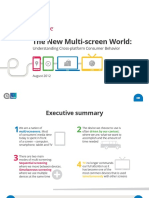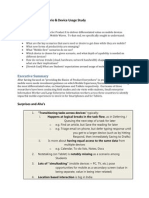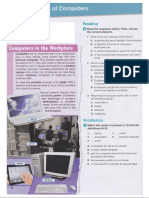0% found this document useful (0 votes)
7 views3 pagesNP WD19 3b AbhiGupta 1
Tablet sales have declined since their peak in 2013, with current sales holding steady at about 4% market share. Consumers prefer mobile phones and laptops for most activities, but a specific audience still uses tablets primarily for entertainment and productivity in fixed locations. Spree Wireless must consider marketing strategies targeting older customers who appreciate the larger screens and longer battery life of tablets.
Uploaded by
dg6699workCopyright
© © All Rights Reserved
We take content rights seriously. If you suspect this is your content, claim it here.
Available Formats
Download as DOCX, PDF, TXT or read online on Scribd
0% found this document useful (0 votes)
7 views3 pagesNP WD19 3b AbhiGupta 1
Tablet sales have declined since their peak in 2013, with current sales holding steady at about 4% market share. Consumers prefer mobile phones and laptops for most activities, but a specific audience still uses tablets primarily for entertainment and productivity in fixed locations. Spree Wireless must consider marketing strategies targeting older customers who appreciate the larger screens and longer battery life of tablets.
Uploaded by
dg6699workCopyright
© © All Rights Reserved
We take content rights seriously. If you suspect this is your content, claim it here.
Available Formats
Download as DOCX, PDF, TXT or read online on Scribd
/ 3
















































































































